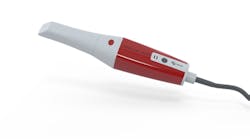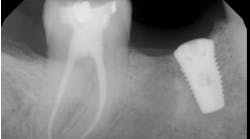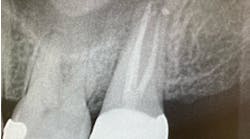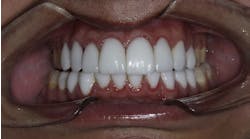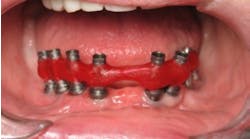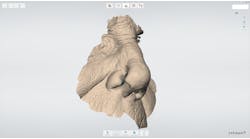Highlights from the 35th annual American Academy of Cosmetic Dentistry scientific meeting in San Diego
Dr. Alisa Neymark recounts highlights from the recent AACD meeting. Biomimetic dentistry is on the vanguard of new advances, and much more attention will be paid to this discipline in the future.
THE AMERICAN ACADEMY OF COSMETIC DENTISTRY (AACD) has positioned itself on the forefront of continuing education, setting the highest standard for both general dentists and laboratory technicians alike. This year’s meeting took place in San Diego, California, April 24–27, 2019.
The AACD’s annual session kicked off with an inspiring lecture by Natalie Stavas, MD, the physician who attended the Boston Marathon on the fateful year of the bombing, running toward the explosions and working to administer CPR, applying tourniquets, and triaging the wounded. An expert in chaos, Dr. Stavas attacks every obstacle with the same attitude: “You run towards that which you fear, that which challenges you, that which is oppositional.” Running to meet chaos head-on actually makes chaos more manageable.
The following two days were a whirlwind of excitement, with a series of lectures on cosmetic dentistry by rock stars of the cosmetic world such as Betsy Bakeman, DDS, FAACD; Adamo Notarantonio, DDS, FAACD; Nelson Rego, CDT, AAACD; Marcos A. Vargas, DDS; Amanda Seay, DDS, AAACD; and Kyle Stanley, DDS.
The most coveted continuing education sessions of the annual meeting were the hands-on courses, with some workshops filling up before registration was open to nonearly bird-special attendees. In these workshops, participants learned how to restore a fractured anterior tooth with perfect secondary and tertiary anatomy in composite, wax-up teeth to perfection, and prepare and temporize a full arch of veneers.
Biomimetic dentistry
Pascal Magne, DMD, PhD, an associate professor at the Herman Ostrow School of Dentistry of the University of Southern California, was the keynote speaker who brought the weekend to a close. He has been described as the father of biomimetic dentistry. Magne began his lecture by defining biomimetics, which is bio-emulation or the mimicking of nature. As it applies to dentistry, biomimetics is a restorative method that aims to emulate natural dental structures using a histo-anatomic approach. (1) Magne stated that biomimetics is falling in love with nature and that the tooth is an amazing example we have to follow—it is a rigid enamel veneer on a bendable dentin core. As such, dentin bonding is the cornerstone of the biomimetic approach.
How implant dentistry fits in
Nothing is more on the forefront of attempting to mimic nature than implant dentistry, which replaces natural dentition with varying success. In practice, implants have been compared with an ankylosed tooth. Dental implants have been more prone to complications as their prevalence increases. (2) Magne mentioned integrating polymers to compensate for the rigidity of implants. This was in reference to a 2013 study on the shock-absorbing capacity of implant-supported restorations (CAD/CAM composite resin or zirconia abutment with composite resin or porcelain crown/onlay), which was compared to a simulated natural tooth complex. It was concluded that composite resin onlays/crowns bonded to zirconia implant abutments presented similar dynamic response to load (damping behavior) when compared to teeth with a simulated periodontal ligament (PDL). (3) This is a controversial study because movement in the polymer implant restoration can cause stresses on the implant platform and retaining screw.
Pushing the envelope
Magne continued to describe more dentistry that pushed the envelope of what is accepted in common practice. He described a case of an onlay made out of real enamel and real dentin; it was a transplant from a patient’s daughter’s wisdom tooth that was retrofitted using a CAD/CAM approach, which now has a follow-up of four years in the mouth. Magne went on to say that it takes 11 years for the body to grow a molar, so we should not be so quick to throw our teeth out. He has a love of natural dentition that is akin to reverence. Magne stated: “I have a dream…” that we keep extracted teeth in a bank and use them as we would our e.max blocks, retrofitting them as onlays.
The biomimetic approach to posts in endodontically treated teeth with little or no ferrule can be summarized by Magne’s statement, “They do not necessarily help.” He cited a study that compared teeth with ferrule and a post versus no post. The study concluded that a post did not make a difference on stress-tested teeth (4). In teeth that had no ferrule and a post, Magne compared titanium versus fiber posts and different core buildup materials. There was more or less no difference in results based on core content, but the fiber posts fared slightly better than titanium. However, the surprising results come when teeth with no ferrule were restored with a fiber-reinforced core material called everX Posterior by GC Europe (only available in Europe at the moment) or an endo crown (which is a one-piece restoration that gets luted to the internal aspect of the preparation similar to a shallow cast post plus crown). These two restorative techniques fared better compared to the posts. When posts failed, 100% had a catastrophic failure and required extraction of the tooth. When teeth without posts fractured, they were usually still restorable.
Biomimetic dentistry is on the vanguard of new advances, and certainly much more attention will be paid to this discipline in the future. The AACD should be commended for a wonderful meeting where attendees left with a renewed passion for dentistry, and that is something to celebrate.
References
1. Bazos P, Magne P. Bio-emulation: biomimetically emulating nature utilizing a histo-anatomic approach; structural analysis. Eur J Esthet Dent. 2011;6(1):8-19. https://pdfs.semanticscholar.org/a8a7/a6c4dcf188f25c74b04eab96c7e31904e6f6.pdf.
2. Froum S. Replacement dental implants: 3 clinical methods to increase survival rates after initial implant failure. Perio-Implant Advisory. https://www.perioimplantadvisory.com/articles/2018/06/replacement-dental-implants-3-clinical-methods-to-increase-survival-rates-after-initial-implant-failure.html. Published June 5, 2018. Accessed May 1, 2019.
3. Magne P, Silva M, Oderich E, Boff LL, Enciso R. Damping behavior of implant-supported restorations. Clin Oral Implants Res. 2013;24(2):143-148. doi:10.1111/j.1600-0501.2011.02311.x.
4. Magne P, Goldberg J, Edelhoff D, Güth JF. Composite resin core buildups with and without post for the restoration of endodontically treated molars without ferrule. Oper Dent. 2016;41(1):64-75. doi:10.2341/14-258-L.
ALSO BY DR. NEYMARK:
An alternative to surgical crown lengthening: Margin elevation using a two-matrix system
cowritten with Dr. Scott Froum:Vaping and oral health: It’s worse than you think



